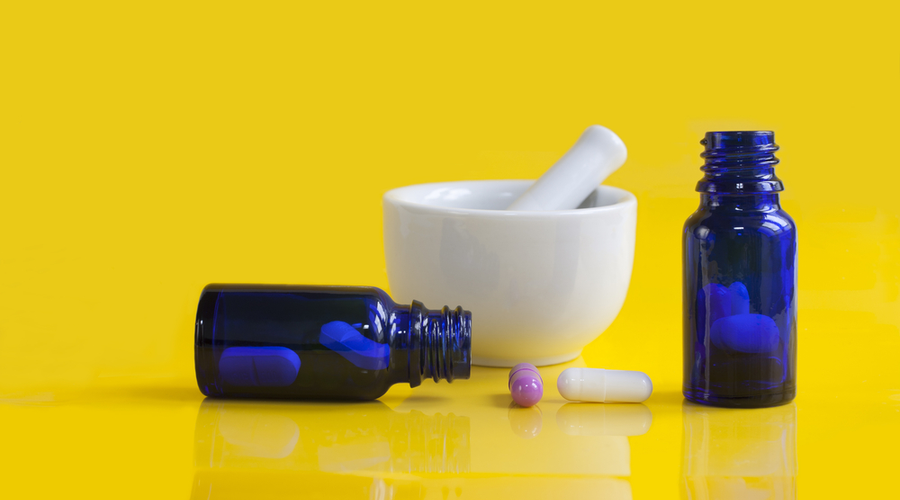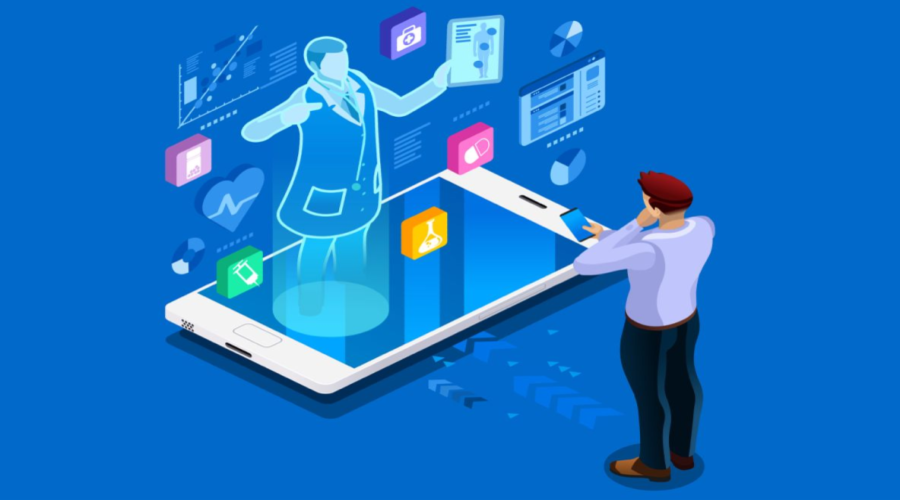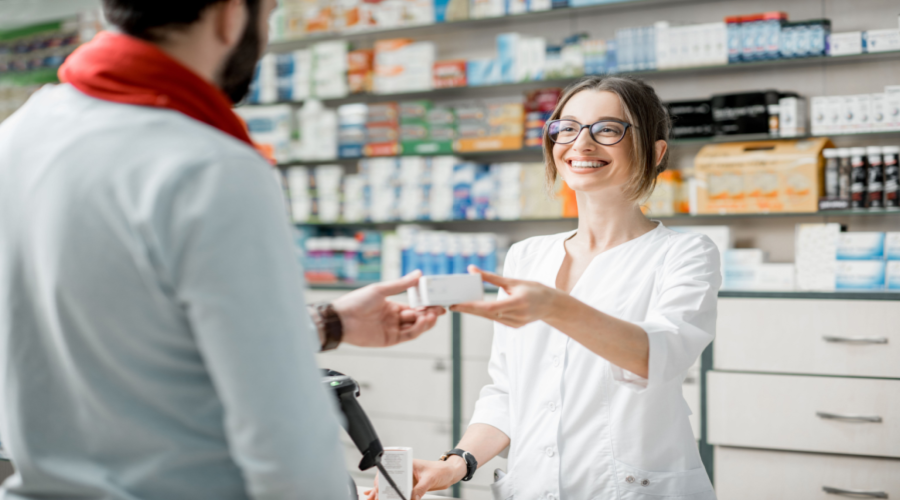One of Bradley White’s pharmacy patients had been to five doctors and tried half a dozen medications to relieve her extreme fatigue and persistent insomnia. Her thyroid condition had gotten so bad that she essentially lived on the couch. She couldn’t cook, play with her kids, or do any of the other activities she used to enjoy.
This went on for months until she heard about a special medicine that could only be concocted from scratch—one she had never seen on TV, heard on the radio, or come across on the internet. A drug no one advertised because no one manufactured it.
The only way to get it was through the increasingly rare professional: a compounding pharmacist who created the solution from raw ingredients, made specifically for each patient according to their needs. This compounded cure was called low-dose naltrexone (LDN).
After finding the right dose and after enough time, LDN changed her life. Her fatigue disappeared. She got off the couch, cooked, and played with her kids. “I felt like I got my life back,” she said. “I don’t know how I would function if I didn’t have this.”
In the four years he’s specialized in low-dose naltrexone, White has been a part of story after story of patients suffering from chronic ailments only to find relief in LDN, wishing they had heard about it long ago. “The coolest thing is you’ve got a patient that says, ‘This drug changed my life,’” White said. “It’s something that I am really pleased to be a part of.”
Another bonus for pharmacy owners is that low-dose naltrexone offers not only exceptional outcomes but an exceptional margin. “It can be upwards of 50 percent,” said White, who owns Medicine Center Pharmacy with four locations in Ohio. “You don’t have to fight with a PBM. You don’t have to worry about the audit.”
It’s a solution where everyone wins. “It’s a niche market that gives not only a business opportunity for compounding pharmacies at a healthy margin, but is low cost for the patients with a high probability of success.”
What is LDN?
Naltrexone itself has been used for decades to treat opioid addiction and alcoholism. But low-dose naltrexone is a recent off-label development and has been shown to improve just about everything. Numerous studies attest to its diversity of benefits and to the diversity of diseases it treats: fibromyalgia, Crohn’s disease, multiple sclerosis, chronic pain, depression, autism spectrum disorders, chronic fatigue, and many, many other conditions.
The studies vary in their evidence and quality, however. Some are based on randomized, double-blind, controlled trials—the gold standard in scientific studies. Others are tentative conclusions reached from animal studies that haven’t been peer-reviewed. For the most comprehensive information on LDN, White recommends the LDN Research Trust.
Naltrexone blocks opioid receptors to stimulate the release of endorphins, which relieve pain and modulate the immune system. It also blocks the toll-like receptor 4 (TLR4), reducing inflammation. In large doses, this produces unpleasant side effects and can negate immune modulation. In small doses, side effects virtually disappear, but all the benefits remain. A dose of 4.5mg provides the same number of endorphins as a dose of 50mg, according to studies by the originator of LDN, Dr. Bernard Bihari. When White learned of its benefits, he was surprised. “Initially it was like, is this too good to be true?”
LDN requires processing a standard 50mg tablet to a dose between .5mg to 16mg, or getting the ingredients in bulk to create capsules, tablets, or other solutions to meet the required dose. There is no product on the market with these doses of naltrexone, and you can’t simply break the pill in half as you might with other drugs. The only way to get it is through a compounding pharmacy.
“This is a perfect example of why compounding pharmacies are relevant in society,” White said. “We are fitting a need that is not available commercially in the marketplace. And the thing that’s interesting about low-dose naltrexone is doses can be all over. So we make 26 different dosage forms and strengths right now.”
Getting started
White’s pharmacy already compounded medications, so it was a simple thing to add to his practice. “The good thing about LDN is on the regulatory side of things, it is not a controlled substance. It is not a hazardous chemical. If you’re already compounding and you have appropriate equipment like capsule machines, powder containment, hoods, and procedures for safe practices, you can start right now.”
The biggest obstacle to clinical success is the titration dosage schedule. One patient might require as little as .5mg for effect while another 9mg. Too much or too little and the patient may not experience any benefits. White starts patients on a dose of .5mg and titrates up to find that Goldilocks spot.
“If everything’s wonderful, sometimes benefits could take less than a month,” White said. “Sometimes it’s six months. It is very individualized.”
This clinical challenge presents a business challenge because working with patients to get the right dose takes a lot of time. And you’re not billing for time. On top of advising the patient and working to get the right dose, you have to take the time to learn the science, compile the research, and educate the physicians.
The prescriber problem
Compounding LDN is one thing; getting providers to prescribe it is another. Manufactured drugs have drug reps, clinical studies, and loads of promotional material behind them. Because LDN is not a patented drug, its only advocates are those who have discovered it through their own research, a colleague, or a patient. That means many doctors aren’t aware of LDN or don’t know much about it. Because of this, White has had to spend much of his time on education.
“Doctors love data, and they love studies to back up their practice,” he said. “They are looking for process validation, and they’re looking for basically the standard of care to back them up for not only liability but effectiveness.”
Sometimes White gets referrals from physicians, but often a patient comes in and says they want to try LDN but have no physicians to help them. So White goes to their physician with reputable studies in hand—from Harvard, Stanford, and the like—and explains how the drug works, the benefits, and the costs.
And the case isn’t hard to make. The drug is inexpensive, has hardly any side effects, and offers tremendous benefits. “There’s nothing to lose on the patient side or the doctor side,” White said.
White also hosts online and in-person seminars. He talks with patients over the phone or right there in the pharmacy, sometimes pulling out his binder stuffed with evidence from academic studies. He cold-calls doctors or reaches out to primary care providers of particular patients. Part of his success depends on these forms of outreach, and part of it depends on the credibility the pharmacy has built over time in the community. Because he’s a reputable source, doctors who get a cold call from him are willing to listen.
Changing lives
Offering LDN requires far more than simply compounding medicine and getting it to the patient. It means becoming a counselor, adviser, and educator. It means persisting through resistance, skepticism, and ignorance. It means enduring the long process of trial and error.
But for White, it has been more than worth it. “My favorite is getting that voicemail, email, or conversation of, ‘Hey, this really helped. Thank you.’ You know, a lot of times you need to write those down when you have those bad days, so you can go back to them and remember you’re doing this for the right reasons.”
From the Magazine
This article was published in our quarterly print magazine, which covers relevant topics in greater depth featuring leading experts in the industry. Subscribe to receive the quarterly print issue in your mailbox. All registered independent pharmacies in the U.S. are eligible to receive a free subscription.
More articles from the March 2022 issue:
- Employee Benefits: The Complete Guide for Independent Pharmacies
- This Compounded Drug Has a 50% Profit Margin and Is Changing Lives
- Inspired End Cap Tips From a National Retail Consultant
- Over-the-Counter Hearing Aids: Everything Pharmacies Need to Know
- 8 Pharmacy Services Third Parties Will Pay For
- How to Streamline Workers’ Compensation Claims
- Chronic Care Management Offers High Reimbursement for Low Investment
A Member-Owned Company Serving Independent Pharmacies
PBA Health is dedicated to helping independent pharmacies reach their full potential on the buy-side of their business. Founded and run by pharmacists, PBA Health serves independent pharmacies with group purchasing services, wholesaler contract negotiations, proprietary purchasing tools, and more.
An HDA member, PBA Health operates its own NABP-accredited warehouse with more than 6,000 SKUs, including brands, generics, narcotics CII-CV, cold-storage products, and over-the-counter (OTC) products — offering the lowest prices in the secondary market.












